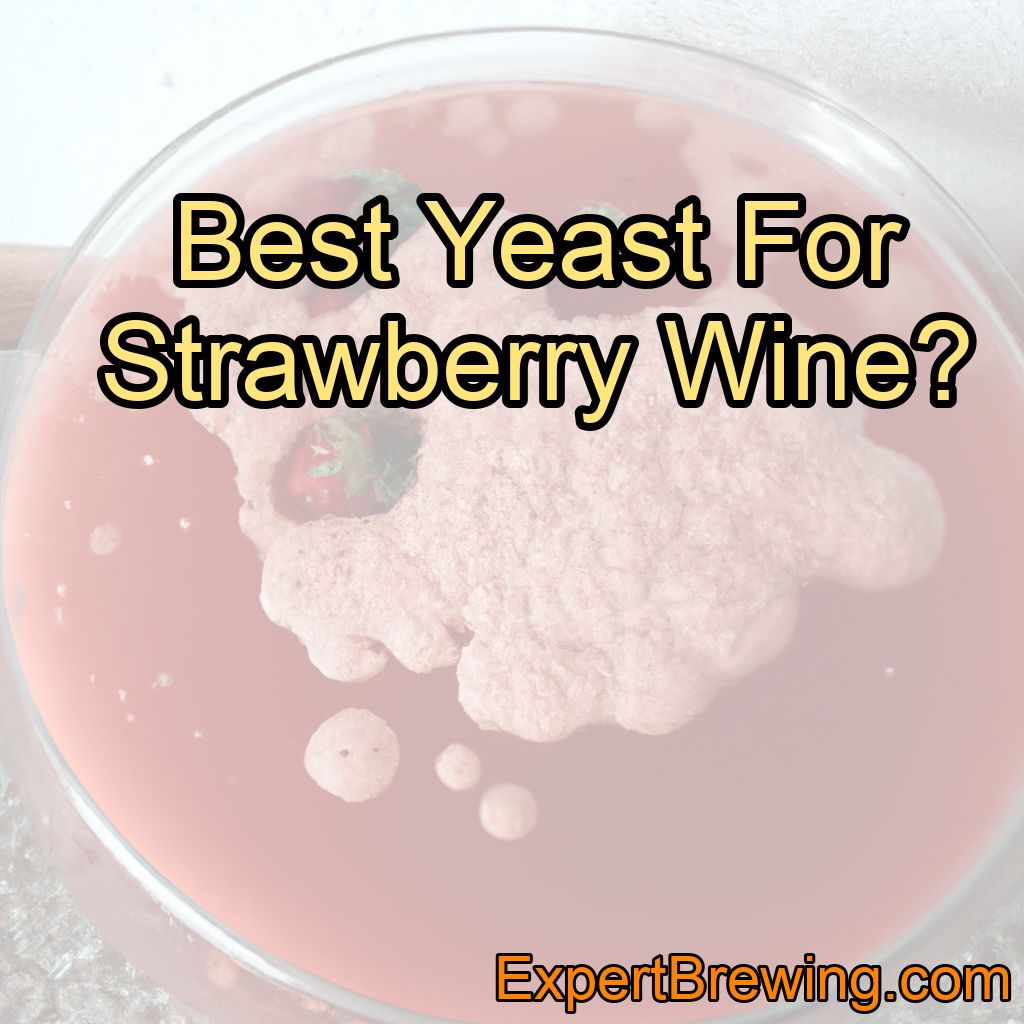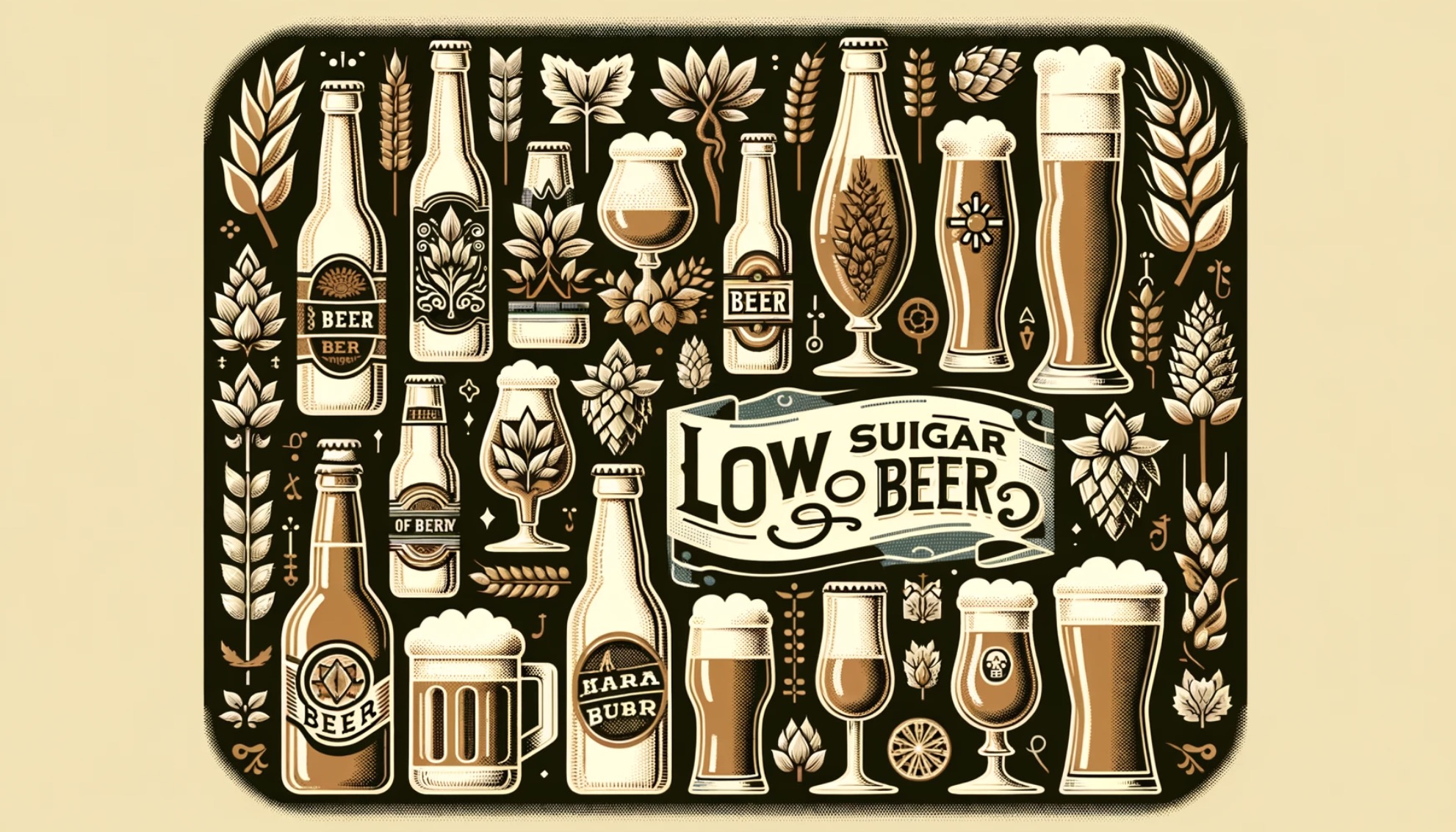When it comes to crafting a delicious and unique strawberry wine, the importance of choosing the right yeast cannot be overstated. Yeast plays a vital role in the fermentation process, converting the sugars in the must into alcohol.
This conversion produces the flavors and aromas that make up the distinct character of the wine. With so many yeast strains available, selecting the perfect one for your strawberry wine can be a daunting task.
Through my many years of experience in homebrewing and winemaking, I have come to understand the various factors that should be considered when choosing the best yeast for strawberry wine.
In my experience, the best yeast for strawberry wine is the Lalvin 71B-1122 yeast strain. This yeast strain enhances the fruity characteristics of the strawberries while also producing a smooth, well-rounded finish.
In this blog post, I will share my insights on this topic, discussing the role of yeast in winemaking, the different types of yeast available, and the factors to consider when selecting the perfect yeast for your strawberry wine.
Lalvin 71B-1122: The Best Yeast for Strawberry Wine
After experimenting with numerous yeast strains, I have found the Lalvin 71B-1122 yeast strainto be the best choice for producing strawberry wine.
This strain originates from the Narbonne region of France and is known for its ability to enhance the fruity characteristics of the wine, making it an ideal choice for strawberry wine.

Lalvin 71B-1122 also has a relatively low fermentation temperature range (between 59-86°F), which allows for a more controlled and consistent fermentation process.
This yeast strain is also able to metabolize a portion of malic acid, resulting in a smoother and well-rounded finish.
Other Yeast Options for Strawberry Wine
While Lalvin 71B-1122 is my top choice for strawberry wine, there are other yeast strains that can also produce excellent results. Some of these options include:
Red Star Premier Cuvee
Premier Cuvee is a versatile and robust yeast strain that is suitable for a wide range of fruit wines, including strawberry wine.

This strain is known for its ability to ferment at a fast pace and can handle high alcohol concentrations, making it a reliable option for fruit wines.
Lalvin EC-1118 – a classic!
This yeast strain is a popular choice for champagne and sparkling wines, but it can also be used for fruit wines. Its a classic among fruit wine and mead brewers as well and you cannot go wrong with the good old Ec-1118!

EC-1118 is known for its robustness in fermentation and its clean and neutral fermentation characteristics, allowing the natural flavors of the fruit to shine through. However, it may not enhance the fruity characteristics as much as the Lalvin 71B-1122 strain.
Red Star Cote des Blancs
Cote des Blancs is a slow fermenting yeast strain that is well-suited for fruit wines, including strawberry wine. This strain is known for producing wines with a fruity and complex aroma, making it a good choice for those looking to emphasize the natural strawberry flavors in their wine.

The Role of Yeast in Fruit Winemaking
Yeast is a crucial component of the winemaking process, as it is responsible for fermenting the grape or fruit sugars into alcohol.
Not only does yeast produce alcohol, but it also releases various flavor compounds and characteristics that contribute to the overall profile of the wine.
Different yeast strains can produce different flavors and aromas, which is why choosing the right yeast for your strawberry wine is so important.
During fermentation, yeast consumes the sugar in the must and produces alcohol, carbon dioxide, and heat as byproducts. In addition, yeast also releases esters, which are responsible for the fruity and floral aromas in the wine.
Types of Yeast
There are two main types of yeast used in winemaking: wild (natural) yeast and commercial (cultured) yeast.
Wild yeast strains are found naturally on the skins of fruits and in the vineyard environment. While wild yeast can produce unique and complex flavors, relying on wild yeast for fermentation can be unpredictable, as the fermentation process can be difficult to control.
On the other hand, commercial yeast strains are specifically cultivated for winemaking purposes. These strains offer more predictability and control during fermentation, allowing winemakers to achieve their desired flavor profiles with greater consistency.
Commercial yeast strains are available in both active dry yeast (ADY) and liquid yeast forms, with the former being more commonly used in home winemaking due to its longer shelf life and ease of use.
Factors to Consider When Selecting Yeast for Strawberry Wine
When choosing a yeast strain for your strawberry wine, there are several factors to consider:
1.Fermentation Temperature Range: Different yeast strains have different temperature ranges for optimal fermentation. Choose a yeast strain that is compatible with your fermentation environment to ensure a consistent and successful fermentation process.
2.Alcohol Tolerance: Yeast strains have varying alcohol tolerances, which can impact the final alcohol content of your wine. Select a yeast strain with an alcohol tolerance that aligns with your desired alcohol content for your strawberry wine.
3.Flavor Profile: Yeast strains can produce different flavor compounds during fermentation, impacting the final taste and aroma of your wine. Choose a yeast strain that complements the fruity characteristics of strawberry wine, such as the Lalvin 71B-1122 strain.
4.Fermentation Speed: Yeast strains ferment at different rates, which can impact the overall fermentation process. Consider the fermentation speed of the yeast strain when selecting the best yeast for your strawberry wine.
A Quick Strawberry Wine Recipe
Ingredients:
- 4 lbs (1.8 kg) fresh or frozen strawberries
- Optional: Apple juice as “base” to save on strawberries.
- 2 lbs (0.9 kg) granulated sugar
- 1 gallon (3.8 liters) water
- 1 tsp pectinase enzyme
- 1 tsp fruit wine yeast (E.g. one of those mentioned above!)
- Campden tablets (for sterilization)
- Acid blend (optional, for adjusting acidity)
- Wine stabilizer (potassium sorbate, if desired)
- Wine bottles and corks
Equipment:
- Primary fermentation container (food-grade plastic or glass)
- Secondary fermentation container (glass carboy)
- Airlock and bung (to fit the carboy)
- Straining bag or cheesecloth
- Hydrometer (for measuring sugar content)
- Sanitizer solution (e.g., StarSan) for cleaning equipment
Instructions:
1. Sanitize Everything:
Ensure all equipment is thoroughly cleaned and sanitized to prevent contamination during the fermentation process.
2. Prepare the Strawberries:
If using fresh strawberries, rinse them under cold water and remove the green caps. For frozen strawberries, thaw them in the refrigerator and allow them to come to room temperature.
3. Extract Juice:
To juice the strawberries, you can use a juicer or crush them manually. If crushing manually, place the strawberries in a straining bag or cheesecloth and press to extract the juice. High pectin fruits like strawberries may require the addition of pectinase to help break down the pectin, which can inhibit fermentation and result in a cloudy wine. Follow the pectinase’s package instructions for proper usage.
I sometimes use apple juice as a base for my strawberry wine or cider, but keep in mind that it will dilute the strawberry taste. But it will save you time and money…
4. Prepare the Must:
In your primary fermentation container, dissolve the sugar in the gallon of water to create the “must.” Mix until the sugar is completely dissolved.
5. Add the Strawberry Juice:
Pour the strawberry juice into the must and mix thoroughly.
6. Measure Specific Gravity:
Use a hydrometer to measure the specific gravity of the must. The initial gravity will give you an idea of the potential alcohol content of the wine.
7. Pitch the Yeast:
Sprinkle the wine yeast on top of the must. Allow the yeast to hydrate for about 15 minutes, then stir gently.
8. Primary Fermentation:
Cover the primary fermentation container with a clean cloth or lid (not airtight) and place it in a cool, dark place. Allow the wine to ferment for about 5-7 days, making sure to stir the mixture daily to aerate and prevent the formation of mold.
9. Rack to Secondary Fermentation:
After the initial fermentation, transfer the wine to a glass carboy for secondary fermentation. Fit the carboy with an airlock to allow gases to escape while preventing air from entering.
10. Secondary Fermentation:
Let the wine ferment in the carboy for about 4-6 weeks or until fermentation activity subsides.
11. Stabilization and Clearing (Optional):
If desired, you can add wine stabilizer to prevent renewed fermentation and then wait for any remaining sediment to settle.
12. Bottling:
Once the wine is clear and fermentation has ceased, it’s time to bottle the strawberry wine. Use sanitized wine bottles and corks for this purpose.
13. Aging (Optional):
While strawberry wine is generally best enjoyed young to preserve its fresh fruit flavors, you can age it for a few months to a year to develop more complexity.
Pros and Cons of Using Fresh and Frozen Fruits:
Fresh Fruits:
Pros: Fresh fruits are usually at their peak flavor and aroma, which can result in a more vibrant and authentic taste. You have control over the ripeness and quality of the fruit used.
Cons: Fresh fruits can be seasonal and might not be available year-round. They are perishable and need to be used quickly before they spoil.
Frozen Fruits:
Pros: Frozen fruits are available year-round, allowing you to make wine at any time. They are convenient and require less preparation since they are already cleaned and prepped for use.
Cons: Freezing can sometimes affect the texture and flavor of the fruit, leading to a slightly different taste in the finished wine compared to using fresh fruits.
Remember, making wine at home involves some trial and error. Each batch may vary depending on factors such as fruit quality, fermentation conditions, and personal preferences.

Enjoy the process and feel free to experiment with different variations to create your perfect strawberry wine. Cheers!
Conclusion: The Perfect Yeast for Strawberry Wine
In conclusion, the best yeast for strawberry wine is the Lalvin 71B-1122 yeast strain. This strain enhances the fruity characteristics of the wine while also producing a smooth, well-rounded finish. Here are ten key facts about this yeast strain and its suitability for strawberry wine:
1. Lalvin 71B-1122 originates from the Narbonne region of France.
2. This yeast strain is known for enhancing fruity characteristics in wine.
3. It has a relatively low fermentation temperature range (59-86°F) for better control and consistency.
4. Lalvin 71B-1122 can metabolize a portion of malic acid, resulting in a smoother finish.
5. This yeast strain is available in active dry yeast (ADY) form.
6. It is suitable for a wide range of fruit wines, including strawberry wine.
7. Lalvin 71B-1122 is compatible with most fermentation environments due to its temperature range.
8. This strain has a medium alcohol tolerance, making it suitable for most strawberry wines.
9. Its fermentation speed is average, allowing for a controlled and successful fermentation process.
10. Overall, Lalvin 71B-1122 is the ideal yeast strain for producing a flavorful and well-rounded strawberry wine.
FAQs
Which Red Star yeast is best for strawberry wine?
Red Star Cote des Blanc or Red Star Premier Cuvée would be good choices for making strawberry wine.
What is the best yeast for making peach wine?
The best yeast for making peach wine is a wine yeast strain such as Lalvin EC-1118 or Red Star Premier Blanc. These yeasts are known for their ability to ferment fruit wines to dryness while preserving the fruit flavors and aromas.
What is the best berry wine yeast?
There is no one “best” berry wine yeast as different strains of yeast can produce different flavors and aromas in the finished wine. It is recommended to choose a yeast that complements the specific type of berry being used and desired flavor profile. Some popular yeast strains for berry wines include Lalvin 71B, EC-1118, and D47.
What is the best yeast for homemade wine?
The best yeast for homemade wine depends on the type of wine being made, but some commonly used yeasts for wine making include Lalvin EC-1118, Lalvin D-47, Red Star Premier Blanc, and Wyeast 4766.
What is the best yeast for homemade fruit wine?
The best yeast for homemade fruit wine depends on the type of fruit being used and the desired flavor profile. Some popular options include Lalvin EC-1118, Red Star Premier Blanc, and Wyeast 4766. It is best to research and experiment with different yeasts to find the one that works best for your specific recipe.
What is the best yeast for fruit wine?
The best yeast for fruit wine depends on the specific fruit being used and the desired flavor profile. Some popular yeast strains for fruit wines include Lalvin K1V-1116, Lalvin 71B-1122, and Red Star Premier Cuvée. It is recommended to do research on the specific fruit being used and experiment with different yeast strains to find the best fit for the desired outcome.





